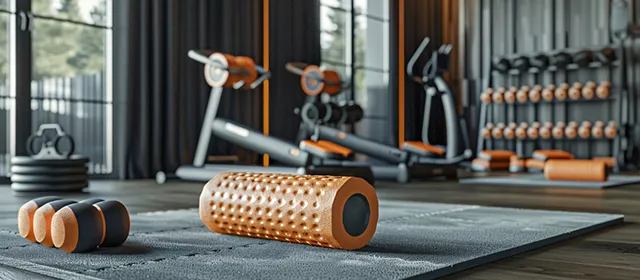One of the biggest changes in the fitness industry's history has occurred in the last ten years, particularly after the pandemic. Fitness is now digitized, individualized, and closely linked to lifestyle decisions. The popularity of smart fitness equipment, home gyms, and environmentally friendly design is changing how people and organizations view exercise.
This change is a challenge as well as an opportunity for suppliers, manufacturers, and investors. As per Kings Research, the global fitness equipment market is set to generate a revenue of USD 21.72 billion by 2031. The market now focuses on developing intelligent, networked ecosystems that complement changing environmental values and health concerns rather than merely manufacturing bulky equipment for gyms. In order to satisfy the evolving demands of customers worldwide, this new stage of the fitness equipment sector combines science, design, and digital intelligence.
How the Pandemic Redefined Fitness Habits Globally
The COVID-19 pandemic changed almost every aspect of how people live and move. When lockdowns closed gyms, the fitness industry had to adapt overnight. A study found that 61.21% of participants had to adjust their exercise plans during the pandemic, with many turning to home fitness solutions (Source: https://digitalrepository.salemstate.edu/).
This was not a short-term shift. It established a new standard in which working out at home became a regular occurrence. Personal training entered living rooms with smart connected devices, online challenges, and virtual lessons. To preserve their physical and mental health, consumers made investments in resistance training equipment, treadmills, and small home setups.
According to the Centers for Disease Control and Prevention (CDC), 46.9% of adults aged 18 and older currently meet the Physical Activity Guidelines for aerobic activity, while 24.2% meet both aerobic and muscle-strengthening goals (Source: https://www.cdc.gov/). These numbers are an encouraging reflection of a more active population, but they also show how much room still exists for growth.
For equipment manufacturers, this evolving consumer behavior opened a wide window for innovation. Companies began focusing on space-efficient designs, modular systems, and Bluetooth-enabled machines that integrate with digital fitness platforms. The fitness experience became personalized, and for many, permanent.
Why Health Awareness Is Driving a New Kind of Fitness Industry
The demand for fitness equipment has increased globally as a result of growing awareness of the health hazards associated with inactive lifestyles. According to the CDC, two of the primary causes of obesity, type 2 diabetes, heart disease, and depression, are inadequate diet and a lack of physical exercise. The need to exercise has become more pressing and preventative in nature as these disorders become increasingly common.
Today's people purchase workout equipment to feel better and live longer, not just to look beautiful. Fitness products are now seen as necessary health investments rather than optional purchases as a result of this behavioral shift. To encourage active lifestyles, governments are investing in public exercise facilities, hospitals are introducing rehabilitative fitness zones, and employers are implementing corporate wellness initiatives.
For industrial leaders, this awareness translates into opportunity. Manufacturers that offer versatile, safe, and ergonomic fitness equipment are gaining an edge in an increasingly health-conscious world. The line between fitness and healthcare continues to blur, creating a new segment of “wellness technology” that merges medical precision with consumer-friendly design.
The Commercial Comeback: How Gyms Are Reclaiming Their Space
After the temporary slowdown during the pandemic, commercial fitness facilities are making a strong comeback. Gyms, boutique studios, and franchised fitness chains are witnessing rapid expansion across major global markets.
A study published in PMC highlights that the fitness industry is experiencing robust growth due to technological innovation and personalized health solutions (https://pmc.ncbi.nlm.nih.gov/). Boutique studios and specialized training spaces are thriving by offering unique, member-focused experiences, from small-group training to mindfulness-based fitness programs.
North America continues to lead in the number of new gym openings, while Asia-Pacific markets such as India, China, and Indonesia are seeing remarkable growth in fitness infrastructure. Franchised gym models and personal training studios are expanding rapidly, driving consistent demand for commercial-grade treadmills, cross trainers, and strength equipment.
Manufacturers are responding with machines that are intelligent and equipped with sensors that monitor performance, track usage, and optimize maintenance. For commercial operators, this data-driven approach means better retention rates and improved operational efficiency.
In this interconnected landscape, gyms have evolved beyond physical locations. Many now operate hybrid models, offering virtual memberships, on-demand sessions, and integrated fitness tracking platforms that extend engagement beyond the gym floor.
Technological Innovation: Where Fitness Meets Intelligence
Fitness equipment now has to have technology, not just a nice-to-have. Workouts are becoming more participatory and goal-oriented as a result of the integration of AI, machine learning, and networking.
Resistance machines with AI capabilities adapt to a user's strength profile to provide the ideal level of training intensity. Real-time heart rate and oxygen level monitoring, synchronization with virtual contests, and route simulation are all features of smart cardio machines. According to research from the Iowa State University Digital Repository, virtual challenges, progress tracking, and gamification boost participation and promote regularity.
Customers and fitness providers both gain from this digital revolution. Manufacturers are able to forecast and optimize maintenance by gaining important insights about usage patterns. Customers receive a more personalized, inspiring, immersive, and quantifiable workout experience.
As technology continues to evolve, the future of fitness equipment will increasingly depend on how well companies integrate hardware and software to create seamless ecosystems. Cloud-based analytics, wearable compatibility, and AI-driven coaching are setting new standards for user engagement and performance.
Sustainability: Building the Future of Responsible Fitness
Sustainability has emerged as one of the most defining forces in the fitness equipment sector. Today’s consumers are more conscious about the environmental impact of their purchases, and manufacturers are listening. The industry is transitioning from high-carbon manufacturing to eco-friendly processes that prioritize recyclable materials, energy-efficient design, and longer product lifecycles.
A global study published on PMC found a strong link between sustainable practices and increased participation in physical activities. People are more likely to engage in fitness routines when they feel their choices align with environmental responsibility. This has encouraged manufacturers to experiment with biodegradable plastics, aluminum frames, and low-emission manufacturing processes.
Equipment durability is another key focus. Instead of producing short-lifecycle products, companies are designing machines that can be easily repaired, upgraded, or recycled. Some brands are exploring solar-powered devices or kinetic energy recovery systems that convert workout energy into electricity.
This emphasis on sustainability is transforming how fitness equipment is designed, marketed, and maintained.
How Digital Platforms Are Transforming Fitness Equipment Sales
E-commerce and direct-to-consumer sales have become central to the fitness equipment industry’s success. Online platforms allow manufacturers to reach a global audience, offer personalized recommendations, and provide remote service support.
The pandemic accelerated this transition. Consumers began relying on digital marketplaces to purchase everything from resistance bands to connected fitness bikes. With the availability of AR and VR visualization tools, customers can now preview equipment in virtual spaces before purchasing.
For industrial players, this digital shift requires a new approach to marketing and logistics. Manufacturers must ensure fast delivery, seamless installation, and efficient after-sales support. The rise of online reviews and influencer-driven marketing has also made transparency and product reliability more important than ever.
In the B2B segment, commercial buyers such as gyms and corporate wellness centers now expect customized bulk solutions, digital tracking systems, and integration with existing fitness software. This has opened new avenues for collaboration between tech companies and fitness equipment brands, creating a more connected, data-driven sales ecosystem.
Global Expansion and the Path Ahead
The fitness equipment market is now at a crossroads where technology, sustainability, and health awareness intersect. Growth opportunities are particularly strong in emerging markets such as India, Brazil, and Southeast Asia, where rising disposable incomes and urban lifestyles are driving demand for home and commercial fitness solutions.
Manufacturers are increasingly adopting regional production strategies to reduce costs and carbon footprints. Partnerships with local suppliers and technology providers are helping global brands localize their offerings while maintaining international quality standards.
At the same time, collaborations between fitness equipment companies and healthcare institutions are growing. Hospitals and physiotherapy centers are adopting specialized rehabilitation equipment for injury recovery and preventive therapy. This crossover between fitness and healthcare points to a broader trend: the integration of wellness into every stage of life.
As governments and organizations continue to promote physical activity as a public health priority, the demand for innovative, accessible, and sustainable fitness equipment is set to grow. For industry leaders, the challenge will be to remain adaptable, blending advanced technology with eco-friendly design while keeping user experience at the center.
Bottom Line
The future of fitness equipment is being shaped by more than just design or technology; it’s being defined by purpose. The industry stands at the intersection of health, innovation, and environmental consciousness. The integration of AI-driven systems, eco-responsible materials, and digital connectivity is changing how people exercise, recover, and live.
For manufacturers, this means an opportunity to create smarter products, deliver superior user experiences, and build long-term brand trust. For consumers, it means access to a fitness journey that is more efficient, personal, and sustainable.




